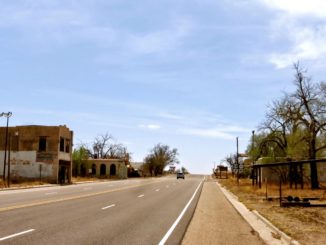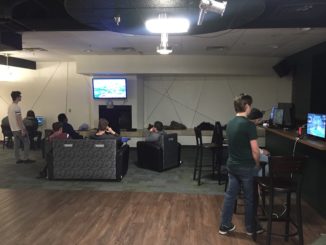By: Yavet Elizalde
Like every other class during the pandemic, I started by staring at a white screen that would tell me to wait until the host lets me into the zoom call. What I didn’t expect was a zoom call filled with more than eighty little gray cubicles with names written across them. After waiting a couple more minutes, a woman starts speaking, and, slowly, the gray cubicles became windows into the lives of others.
Four Universities: Eastern New Mexico University, The University of Arizona, the University of Sonora (La Universidad de Sonora) and CETYS (Centro de Enseñanza Técnica y Superior) , have virtually come together to provide a virtual student exchange, in which the main goal is to identify social, economic, historic and cultural processes that came together to form the US-Mexico border communities.
As we came across this topic in our syllabus, the idea that “the other will always be our mirror” came up and I couldn’t help but feel an old feeling of belonging and not all at the same time. Another short saying popped into my head, “I am neither from here nor there.” I once again felt that nostalgic wound that I thought I had put behind me.
On our second meeting, we met to discuss the idea of world citizenship or the idea that we are all citizens of the world and have an obligation to fight and support each other’s human rights and well being. In that module the professor included some surveys to see what our perspectives are towards each other as neighbors and as members of this border community. Using the survey, we found that most of us, more than 90%, have been to the other country, while 81% of us never have participated in any kind of international virtual exchange.
This wasn’t the only finding. We were also asked to describe the relationship between the United States and Mexico, and I noted some key themes that are worrisome. Most said that there was a notable difference between the people between our two countries, that diplomatic relations worsened between the countries, there is racism against Mexicans, but plenty of trade and that there is a love-hate relationship between the neighbors.
After the professor’s presentation, we broke up into breakout rooms in zoom. We were instructed to discuss our thoughts and feelings over our classmates’ responses to the survey, and when I began to hear the thoughts and opinions of my peers, the pessimism within me began to grow. The famous line, “a Mexican’s worst enemy is another Mexican” was brought up as one of the main causes for this pessimism, and the other was the dependence that Mexico has on the United States. One of my white classmates brought up the idea that, “without the US, Mexico would collapse,” and nobody said anything. A room full of Mexicans stayed quite as the white kid stated the obvious.
The thing that surprised me was the fact that we were mostly aware of the problems, but for some reason, maybe it was our negative attitudes towards our relations, we never dug further to find ways to clean up and clear up the situation in which we find ourselves as a new generation. It wasn’t the language barrier that exists between the two countries or the racial difference that held us back. We know that there is a problem, but it seems as if we feel like we can’t do anything to change it. Therefore, we never educate ourselves on the symptoms and we will never find the cure to the problems that plague Mexico’s government. As for the United States, while there are people fighting to change the system, it won’t be until we educate ourselves that we change this never-ending cycle for the better.



